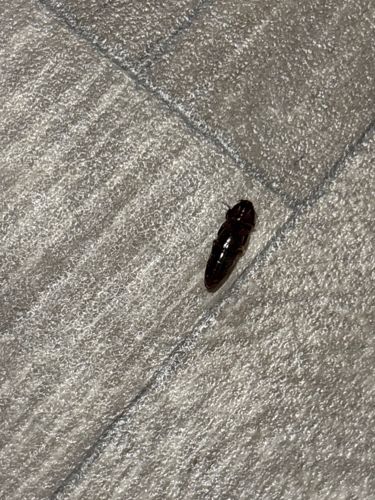Click Beetle
Scientific Name: Family Elateridae (various genera and species)
Order & Family: Order Coleoptera, Family Elateridae
Size: Typically 12 to 30 mm (0.5 to 1.2 inches), though some species can be smaller or larger.

Natural Habitat
Click beetles are diverse and can be found in a variety of habitats depending on the species. Many adults live in forests, grasslands, gardens, and agricultural fields, often near decaying wood, under bark, or in leaf litter. Larvae (wireworms) live in soil.
Diet & Feeding
Adult click beetles generally feed on pollen, nectar, plant sap, or sometimes soft-bodied insects. Larvae (wireworms) are often omnivorous or phytophagous, feeding on plant roots (especially grasses and crops like corn, potatoes, and wheat) or decaying organic matter. Some wireworm species are predatory.
Behavior Patterns
Click beetles are known for their unique 'clicking' mechanism. When a click beetle is on its back, it can arch its body and rapidly snap a spine on its prosternum into a groove on its mesosternum, producing an audible 'click' and causing the beetle to jump into the air. This helps them right themselves or escape predators. They are generally nocturnal or crepuscular and are often attracted to lights. Larvae (wireworms) can live for several years in the soil.
Risks & Benefits
Risks: The larval stage, known as wireworms, can be significant agricultural pests, causing damage to the roots and tubers of various crops, leading to economic losses. Benefits: Some adult click beetles may contribute to pollination, and some predatory wireworm species can help control other insect pests in the soil. They are also a food source for birds and other animals.
Identified on: 9/17/2025